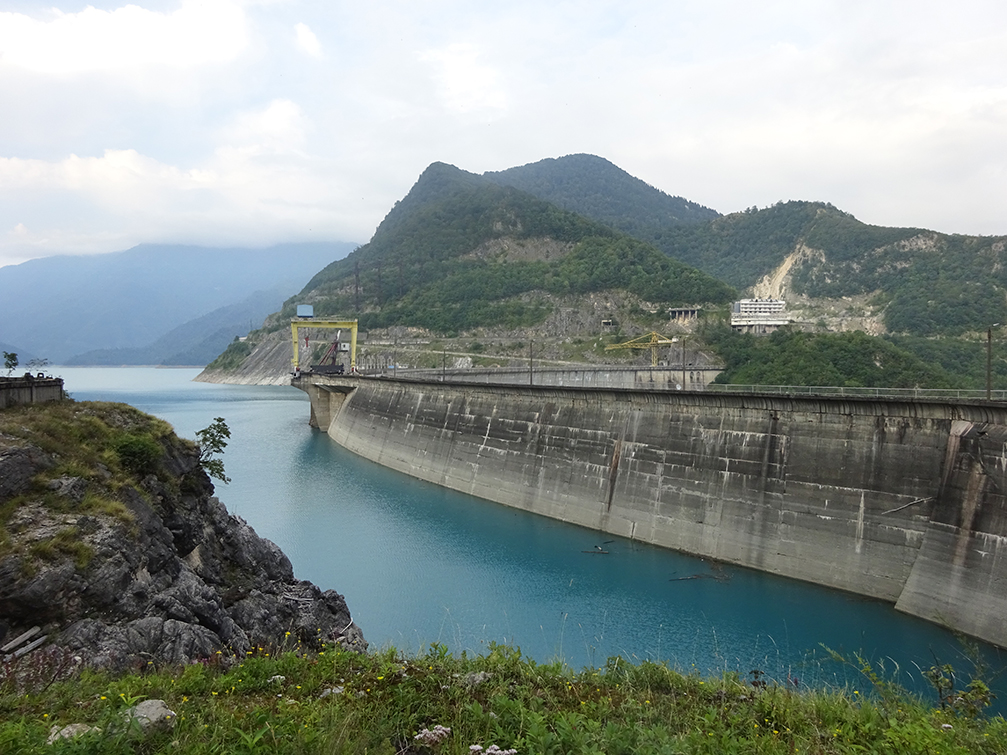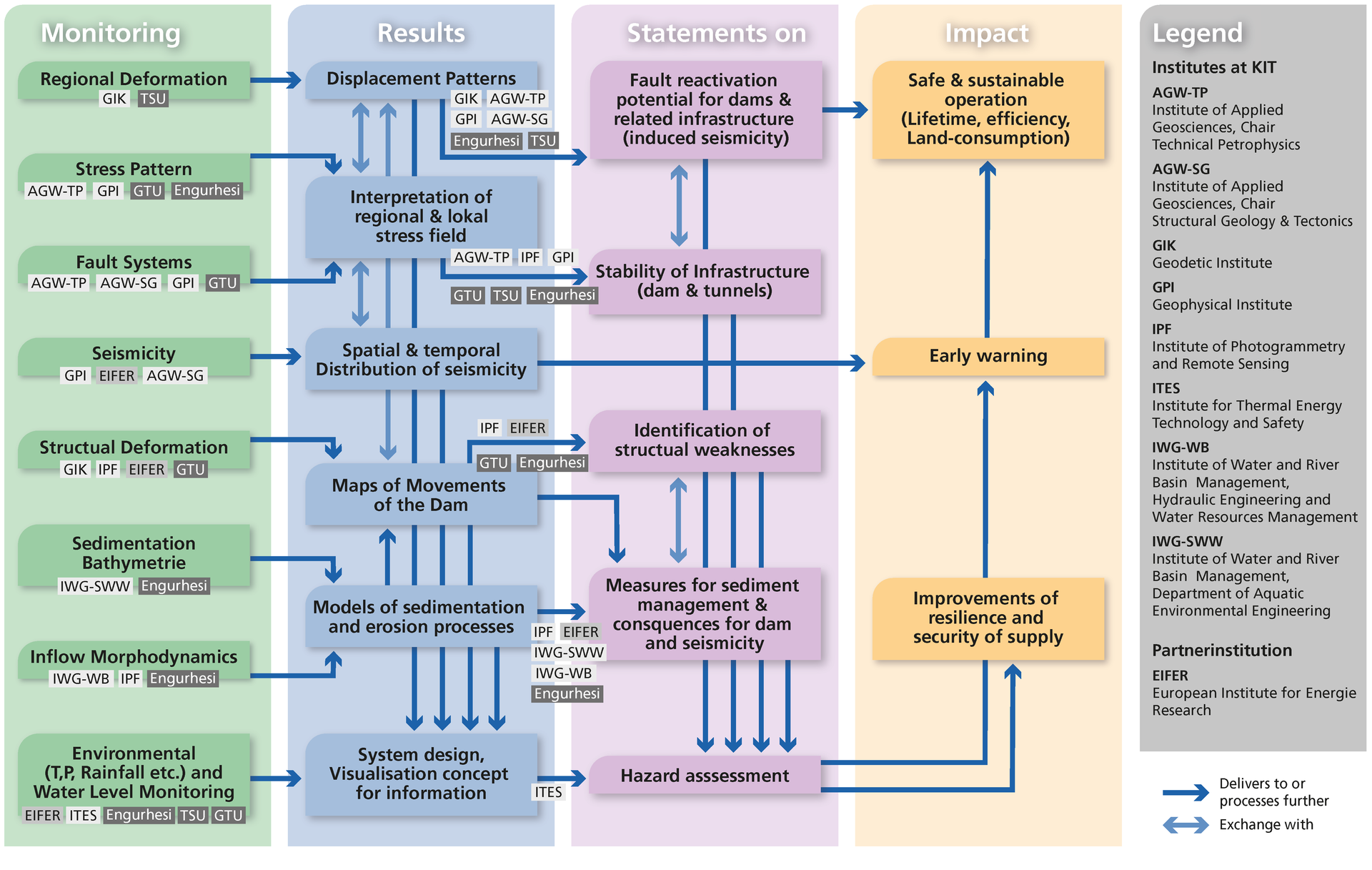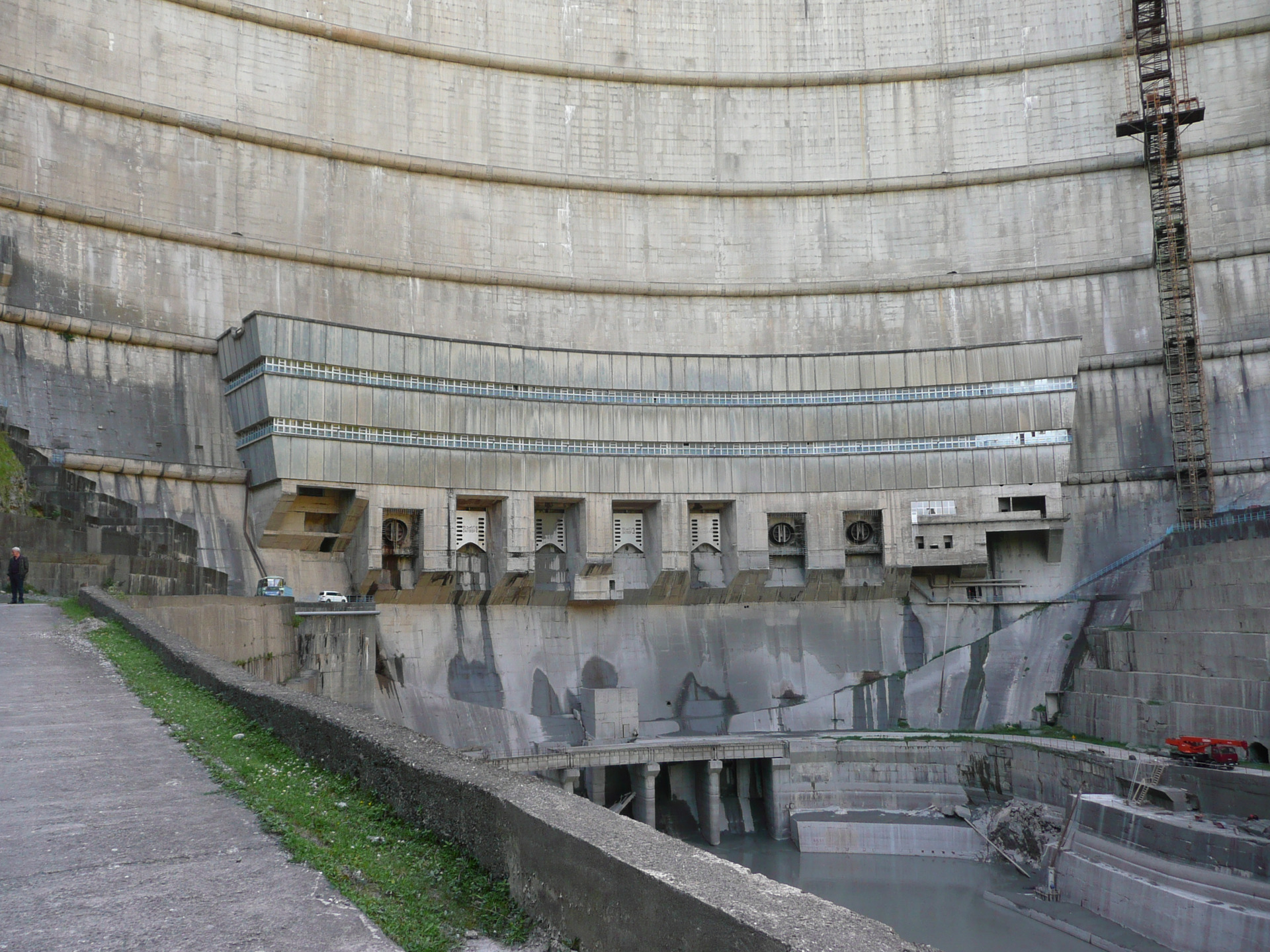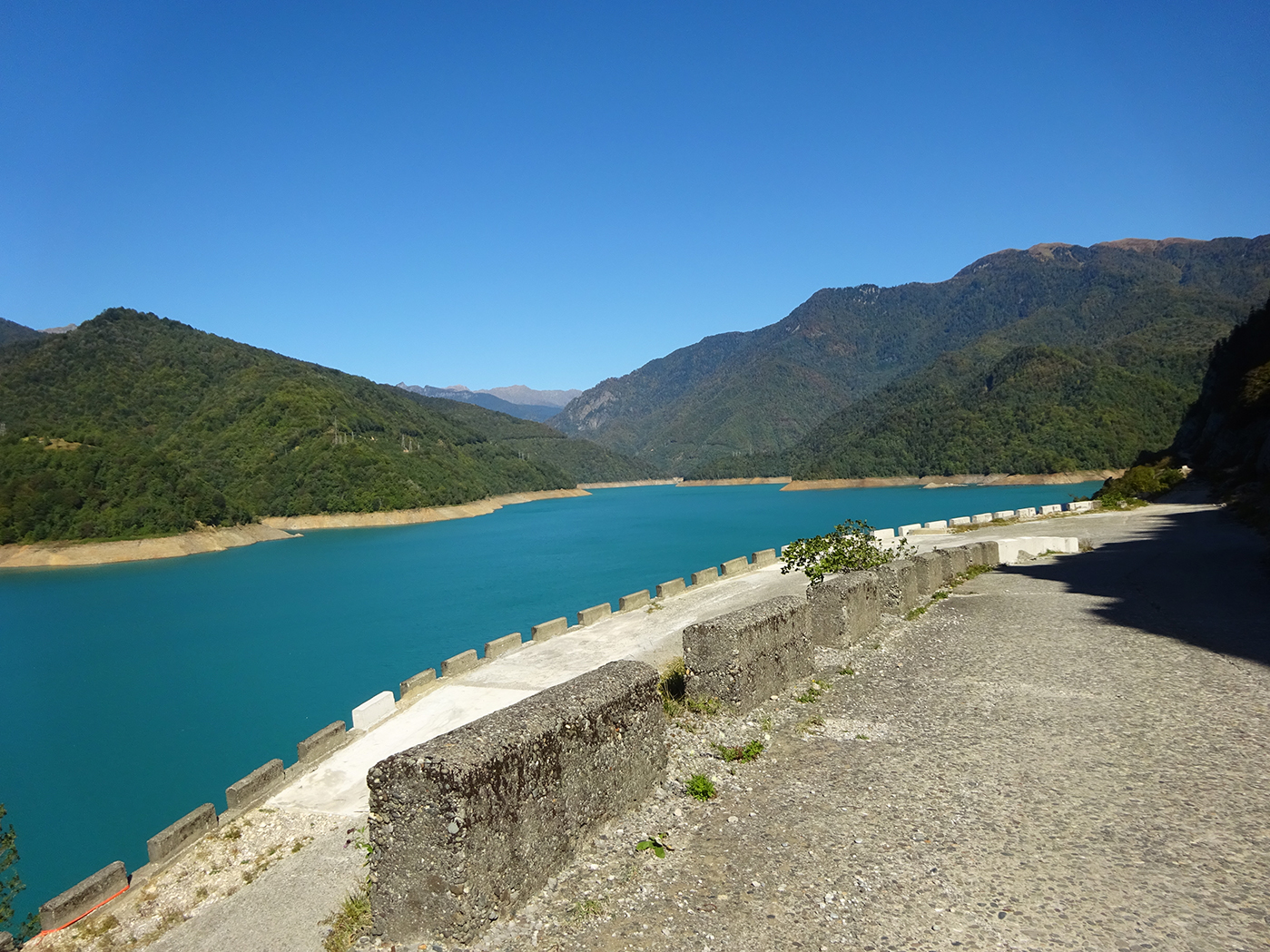New Dams are being built worldwide as part of the creation of a climate-friendly energy supply. In many places, natural or induced earthquakes, especially in combination with other extreme events such as heavy precipitation or landslides, are jeopardising the safety of dams and thus local populations.
In the DAMAST and DAMAST-Transfer projects, German, Georgian and Armenian partners are examining the underlying processes as well as safety-relevant parameters of water reservoirs using the example of the Enguri Dam in the Caucasus. The project will develop transferable monitoring concepts for dams in tectonically active regions.
Many Dams are located in seismically active regions worldwide. In addition to reducing the risks posed by natural hazards (earthquakes, landslides, heavy precipitation) and induced seismicity, DAMAST and DAMAST-Transfer are dedicated to the long-term efficiency of reservoir operation.
Even if the technical facilities are designed for seismic activity in the immediate vicinity, so-called induced seismicity, can be triggered by operating activities on water reservoirs, endangering the population. Particular risk is caused by the simultaneous occurrence of several extreme events. For example, the combination of earthquakes, landslides or heavy precipitation with the unfavourable distribution of sediments in the water reservoir can lead to a sudden mobilisation and displacement of the sediments in the reservoir. Sediments affect the storage volume and thus a reduction in plant efficiency can occur after 40 to 50 years of operation, significantly reduce the lifetime of hydropower plants and make new constructions inevitable.The construction of replacement storage also leads to high costs. Non-functioning bottom drains also endanger the operational safety of the system. Due to climate change, it is expected that the sediment influx into reservoirs worldwide will increase significantly in the future.
The operation of dams guarantees the supply of water to large parts of the population and agriculture and is experiencing new challenges due to climate change. In addition, hydropower plants and water reservoirs are of particular importance as large energy storage facilities in the energy transition. High flexibility and large storage capacity are essential to ensure the security of energy supply.
The DAMAST investigations have provided new insights in the processes of induced seismicity and safety relevant parameters of water storage sites. For example it was shown, that induced seismicity occurs not only in the immediate reservoir area. In the case of Enguri Dam, which has a height of 271m, extreme sediment displacements over short periods of time and depending on the water level were located. Geodetic (regional) and photogrammetric (structural) deformation measurements showed movements of the dam in response to varying water levels in the reservoir.
What are the main targets that are addressed with DAMAST-Transfer?
Dams are used to supply water and electricity and to protect against flooding. For the dam and hydropower infrastructures safety-relevant parameters must be monitored and evaluated. In Germany, there are regulations to make the structures safe during their long lifetime. This is not the case in the Caucasus.
The transfer project is pursuing advanced capacity building activities. For the future tasks of energy and water supply the missing engineers, computer scientists, archivists, technicians and geo-scientists in the Caucasus shall be trained in a Scientific Centre of Competence for which the first structures are built within DAMAST-Transfer Such an institution does not exist in the Caucasus so far and demonstrates the innovative character of DAMAST-Transfer.
Unique data could and can be obtained from the DAMAST monitoring installations. The capacity building and transfer will take place in particular through the joint acquisition, processing, evaluation and interpretation of these data from the fields of seismology, geodesy, photogrammetry, water and sediment management, geomechanics and hazard analysis.
.
What are the components of the Scientific Centre of Competence and who can benefit?
In the Scientific Centre of Competence, the relevant basic data will be archived, own modern tools for monitoring and field data processing will be kept and maintained, new monitoring data will be obtained and interpreted, and training courses will be held.

This data can then be used to develop recommendations for the construction and operation of the facilities and to assess the risk potential. Project results can be used by project operators, the public, policy makers, permitting authorities, and scientists at research institutions.
What are the steps in the process?
The first step towards the development of the competence center is the qualification via theoretical and practical trainings in the transfer project. In parallel, the organizational structure for the Scientific Centre of Competence will be developed and the stakeholders will be involved. The establishment of a local base for monitoring and data archiving will also form the basis for the later Scientific Centre of Competence.
Expected Outcomes
As a result of the transfer project, qualified persons should be available for the establishment, operation and further development of the Scientific Centre of Competence for dams (know-how transfer). In addition, the structural improvement of the research infrastructure (transfer of equipment) and competencies for research at TSU and GTU is expected.
Geographical Location
The Enguri Dam (Georgia) is located in the Caucasus about 50 km east of the Black Sea, NNE of Zugdidi (~35 km) and to the north of Jvari (~10 km). It is part of the Enguri HES: Hydroelectric power station (partly located in Abkhazia) and plays an important role in power supply for western Georgia.
DAMAST and DAMAST-Transfer act within the framework of precautionary research and innovation, especially for the implementation of the UN development goals “Clean Water”, “Affordable and Clean Energy”, “Innovation and Infrastructure” und “Climate Actions”.

DAMAST-Transfer Organisation

The DAMAST project (2019-2022)
DAMAST aimed to make a contribution to the systematic reduction of hazards at water reservoirs as well as to their long-term and efficient operation. The objective was to develop monitoring concepts that can also be transferred to other dams in comparable locations. The project used innovative methods for the collection and analysis of relevant data. DAMAST was dedicated to the long-term efficiency of reservoir operation and to avoid the construction of replacement storage with its high costs.
DAMAST and DAMAST-Transfer: Monitoring on land, at sea and from space
Using the example of the Enguri Dam in the seismically active region of the North Caucasus, DAMAST and DAMAST-Transfer investigate which hazards arise through the operation of water reservoirs, such as initial filling or annual water level changes, and how these hazards can be reduced. A combination of innovative monitoring processes and consideration of model scenarios for the spatial and temporal development of seismicity and local and regional deformation of the dam and the surrounding terrain will allow for the derivation of suitable monitoring measures. This will also form the basis for developing recommendations for dam operation and for improving risk management.
For a broader understanding of underlying processes that lead, for example, to seismic events, in particular as a consequence of cascade effects, DAMAST and DAMAST-Transfer identify relevant key parameters. Different methods are used in a modular monitoring concept for the acquisition of seismological, meteorological, geodetic and geological data and for the recording of sediments and changes to the dam structure. These include remote sensing techniques, well logging, modern seismic recording techniques, terrestrial radar interferometry, underwater drones, multi-beam bathymetry, multi-frequency echo sounding and sampling for sediment characterisation, and novel mini-sensors.
From monitoring to decision-making support
The results of the project should show if and how improved risk management can be implemented with an early warning system for assistance with decision-making. In this project, medium-sized companies and scientific institutions are working together on-site with logistical support form operating company Engurhesi. The recommendations developed will help Engurhesi with operational decisions and assist authorities and administrations in the use of suitable monitoring concepts as well as further reduce the risk to the population with early warnings. The project results should also benefit systems in comparable alpine and seismically active regions.
DAMAST - Technologies for the Safe and Efficient Operation of Water Reservoirs
- Contact:
- Project Group:
- Funding:
Federal Ministry of Education and Research (BMBF)
Funding Volume: 5.061M € (incl. project flat rate)
- Partner:
- Startdate:
May 1, 2019
- Enddate:
April 30, 2022
DAMAST-Transfer – Transfer for Sustainability
- Contact:
- Project Group:
Institute of Applied Geosciences
Division Technical Petrophysics - Funding:
Federal Ministry of Education and Research (BMBF)
Funding Volume: 2.141M € (incl. project flat rate) - Partner:
- Startdate:
May 1, 2022
- Enddate:
April 30, 2024






